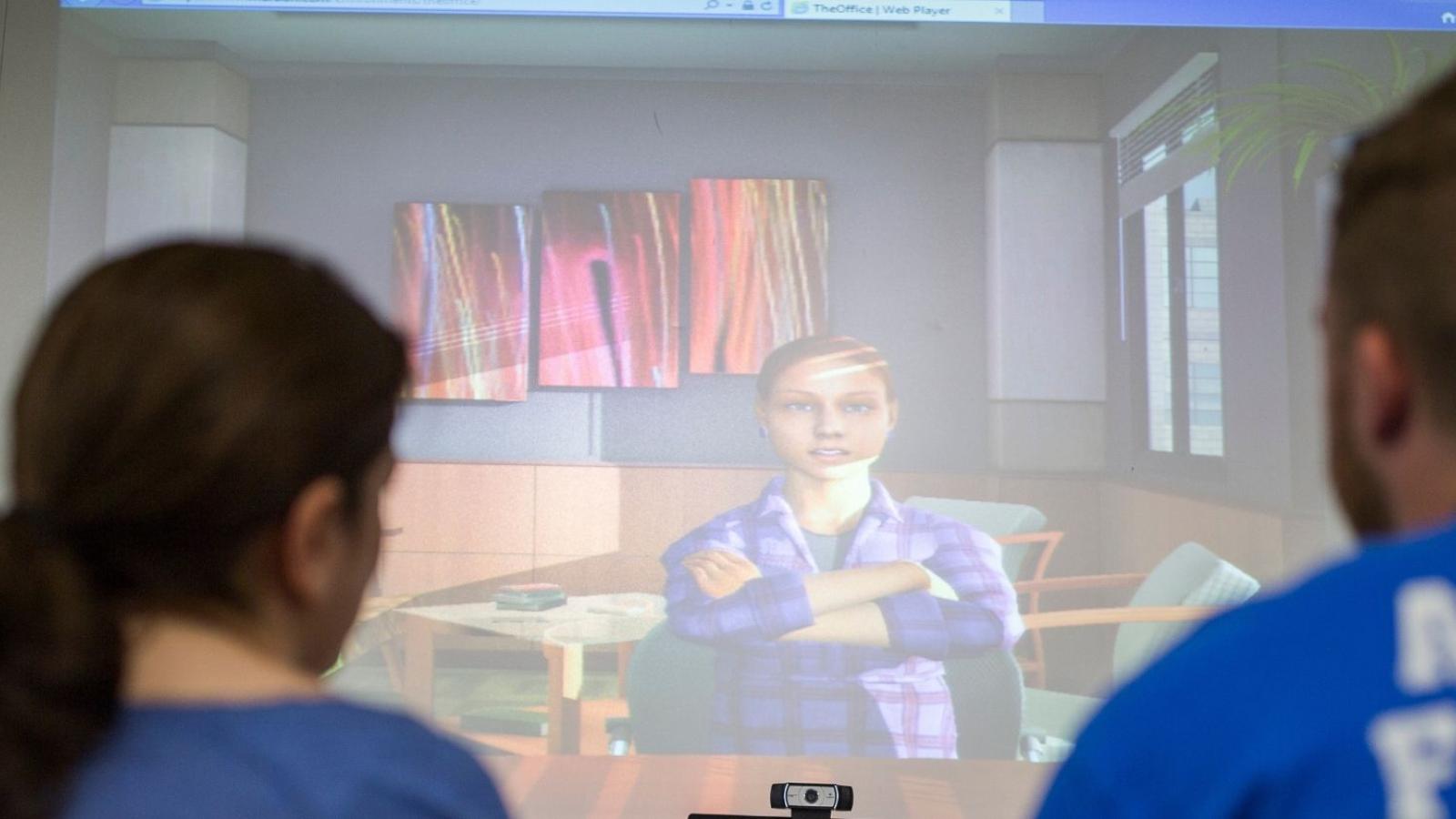Welcome to Teaching in the Digital Age
- How will I handle students who constantly use their cell phones during class?
- How do I tell a parent their child is failing during a conference?
- What can I do to get my class to engage with me?
At Pace University School of Education, we prepare our aspiring teachers to become innovative classroom instructors. More than ever, technology is a necessity in education, as demonstrated when the country was forced into remote learning due to the pandemic. Not only do we integrate enriched field experiences within our coursework, but we also support it with simulation technology.
We are one of the only education colleges in New York City and the lower Hudson Valley to offer this mixed-reality technology that simulates everyday teacher experiences, from setting classroom expectations to parent-teacher conferences to special education classroom scenarios and so much more. These digital avatars allow our students to practice proactive and reactive strategies in a variety of content areas, all in a safe environment.
From an energetic first grader to a defiant teenager, our students can engage with various avatars: even adults, during parent-teacher conferences. Preparation is critical in education, and our students graduate prepared, both inside and outside the classroom.
Simulation Technology Expands to Support Colleges Nationwide
Based on the successful outcomes of this technology, the School of Education was approached by one of the top five school districts in the US to produce professional development videos leveraging avatars for their growing population of temporary instructors and substitute teachers. Due to the critical nationwide teacher shortage, they required support for the growing number of temporary instructors. School of Education's Jennifer Pankowski, EdD, and Joan Walker, PhD, helped assemble the team to create the cross-disciplinary videos utilizing internal resources and talent.
“The project—involving different schools, students—there’s a lot to be said about when programs come together, that’s when we can create authentic spaces for the students to do the work,” said Walker. “I think that’s an example of what this project has been able to do."
—Joan Walker PhD
Getting Ahead of the Teacher Shortage, Pace Magazine
Since then, numerous schools across the country have utilized our classroom simulation technology to enhance the quality of their programs. Some examples include leveraging the avatars to enhance client support and measuring implicit biases of new teachers in the classroom as they interact with their students.
Classroom simulation technology has come a long way from being just a tool for teacher preparation. It has proven to be an effective means of supporting professional development and much more. The digital age has emerged.
